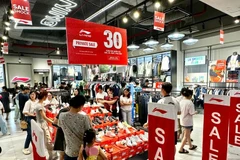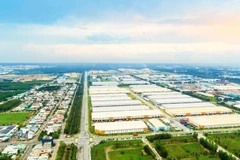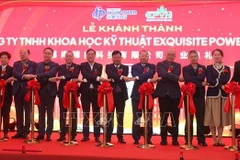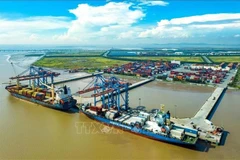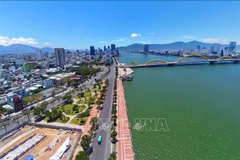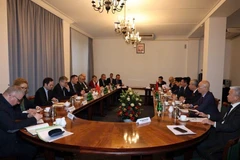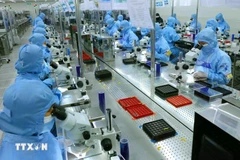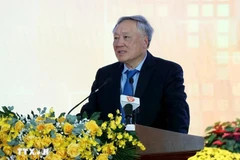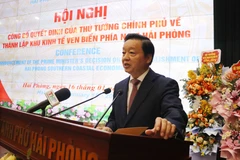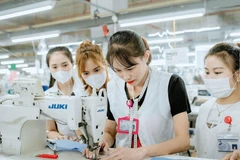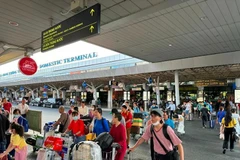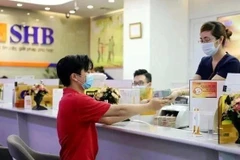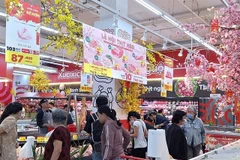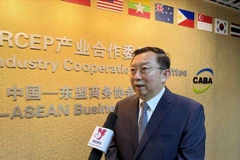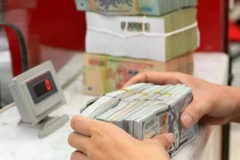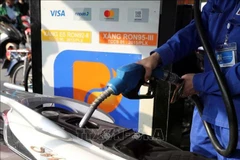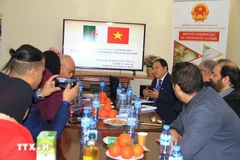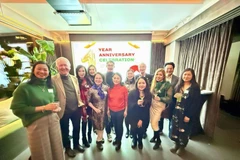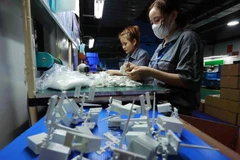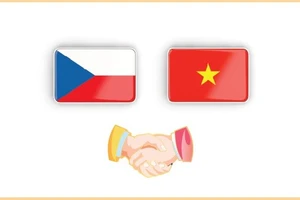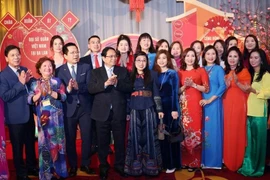Hanoi (VNS/VNA) - Vietnam needsa long-term strategy to increase the quality of its rice exports to createsustainable growth in the future, experts say.
To meet the changing demands of export markets, Bui Thi Thanh Tam, generaldirector of VinaFoods 1 Corporation, said firms should invest in domesticproduction to increase the quality of rice.
To do that, the agriculture sector needed support from relevant ministries.
The Ministry of Industry and Trade focuses on developing markets andnegotiating free trade agreements (FTAs) to create favourable conditions forrice exports. Meanwhile, the Ministry of Agriculture and Rural Development(MARD) is in charge of production, including improving rice quality.
Local authorities needed to guide and encourage farmers to produce organic riceso that Vietnam could offer clean materials to meet market demands. Businessesalso needed to ensure the quality of the rice they were exporting. If thoseparts were linked, it would ensure the sustainable growth of rice exports, Tamsaid.
Minister of Agriculture and Rural Development Nguyen Xuan Cuong said the globalrice market was at present about 36-40 million tonnes per year. Of this figure,Vietnam exported 7 million tonnes of rice per year, but had failed to reachhigh export value due to its passive approach.
In the long-term strategy, the agriculture sector should look at reducing thetotal area of rice plantations to a level that ensured food security andpartial exports.
Cuong said the domestic market needed toensure supplies and the quality of rice and packaging. Regarding exportmarkets, Vietnam should promote and expand markets, for examples, in Africa andthe Middle East, as well as regional markets such as Indonesia and thePhilippines.
He said this year, the winter-spring rice crop in the Mekong Delta had yieldedup to 14 million tonnes. Despite a significant drop in exports to China,Vietnam had still gained growth in export volume.
"The Government plans to put 200,000 tonnes of rice in reserve to maintainrice prices and develop the market. Vietnamese enterprises have expanded intothe American market," Cuong told Kinh te Nong thon (Rural Economy)newspaper.
Vietnam’s major competitor, Thailand, was facing a severe drought, affectingthe country's rice production. Singapore, which regularly imported 30-40percent of its rice from Thailand, was considering a strategy to diversifyimports from other sources, according to MARD.
Opportunities to exporting rice to Singapore would result for many othercountries, especially Vietnam and Cambodia.
In addition, Japan, which regularly imported 50 percent of its rice demand fromthe US, was also considering switching to importing rice from CPTPP(Comprehensive and Progressive Agreement for Trans-Pacific Partnership)members, including Vietnam.
MARD said the rice export volume in the first nine months was estimated at 5.2million tonnes, earning 2.24 billion USD, up 5.9 percent in volume but down 9.8percent in value compared to the same period in 2018.
Of which, rice exports in September were estimated at 586,000 tonnes, earning251 million USD.
Deputy Director of the Ministry of Industry and Trade’s Import and ExportDepartment Tran Thanh Hai said China had been Vietnam’s largest rice exportmarket for many years, but this year exports had fallen by 65 percent.
In 2018, China tightened control on rice from Vietnam including quality controland traceability. It has also set an import quota of about 5 million tonnes ofrice this year, but in fact, it is only likely to import about 3.3 milliontonnes.
Tam said China had adopted a plant quarantine policy. This had forced localfirms to promote rice exports in other markets. For example, exports to thePhilippines had doubled or even tripled against previous years. The Iraqimarket had also imported up to 400,000 tonnes of Vietnamese rice.
Despite these difficulties, Tam said Vietnam would still reach its target ofexporting more than 6.5 million tonnes of rice this year./.






